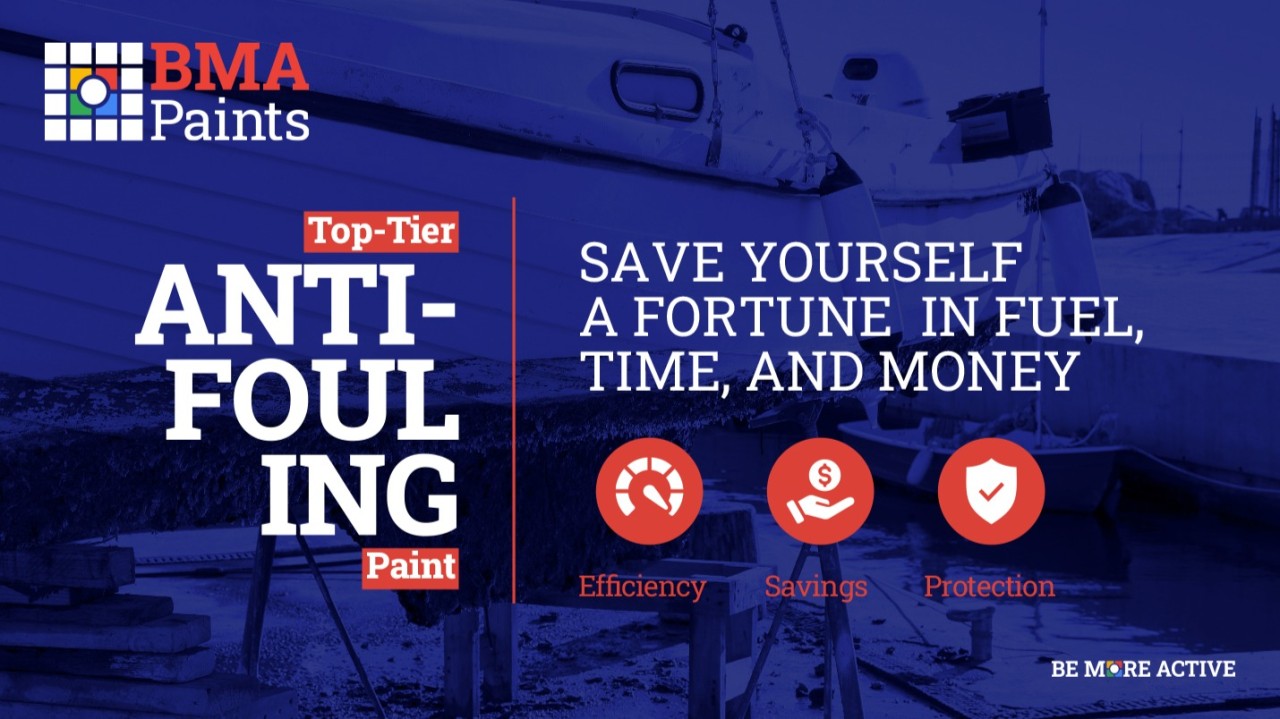Latest News
- Home
- /
- Latest News
- /
- Enhance Marine Performance with Advanced Antifouling Coatings
Enhance Marine Performance with Advanced Antifouling Coatings
Article written by Maguy Aouad | Customer Service Manager at BMA Paints
Antifouling paint is a one component, special category of coatings, formulated to be applied as an outboard layer on the ships’ or boats’ hull, to slow the fouling growth, and facilitate its detachment.
Fouling is an undesirable accumulation of microorganisms, plants, algae, barnacles or small animals (shells, oysters, mussels, …) on wet surfaces that have a mechanical function, causing structural or functional deficiencies.
Antifouling system acts also as a barrier against corrosion on metal hulls.
Antifouling main ingredients are usually: the resin that adheres to the hull, the copper-based biocide that fights against hard shell, and the co-biocide, chemical compositions able to deter the build-up of weed and slim.
Antifouling: Essential Protection for Marine Structures
Antifouling prevent the formation of the biological fouling avoiding the below critical problems, that usually face marine structures:
- Ships’ speed decrease as its hull becomes fouled with marine growth, and its displacement becomes remarkable. These events increase the fuel and the time consumption leading to a financial and an environmental bad impact, due to energy cost and polluting emissions increase.
- Some attached subaquatic organisms, such as shipworms, would bore into the hull causing severe damage over time, and leading to expensive repairs.
- Biofouling contributes to the necessity of frequent ships and boats cleaning, increasing the cost of their maintenance.
- Fouling also decreases the ship ability to sail upwind, since it increases the weight of the hull, and throws off the boat balance because those marine organisms may grow unevenly across the bottom of the ship.
- Attached fouling may affect the environment balance, since many organisms may be transported from an ecosystem to another one.

Effective Application of Antifouling for Optimal Marine Protection
- Either the antifouling is applied on a previously coated or on a bare substrate, it should be preceded by one layer of a silver primer.
- 2 to 3 coats of antifouling are sufficient to prevent the fouling development on the hull for a season, but if the hull is already protected with antifouling in good condition, a simple touch up will be suffice.
- Antifouling should be applied on a clean substrate, not contaminated with salt, or any other contaminant.
- Antifouling is ideal to be applied on wood, GRP and steel.
- Antifouling application should be an annual effort, preferably effectuated before sealing. Although, Boats can be launched 16 hours after the application. Full cure is achieved within 72 hours.
A Commitment to Excellence: BMA’s Superior Antifouling Solutions
Are you ready for the haulout and looking for a way to protect your boat and enhance its performance? Boost your boat’s performance with our top-tier antifouling paint that helps control fuel and time consumption. Perfect for wood, GRP, and steel boats!
BMA Paints offers a great quality of a copper paint antifouling with the silver primer, In order to provide the best service to its loyal customers and to preserve the environment.


